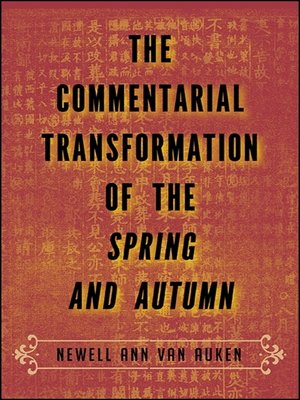The Commentarial Transformation of the Spring and Autumn
ebook ∣ SUNY Series in Chinese Philosophy and Culture
By Newell Ann Van Auken

Sign up to save your library
With an OverDrive account, you can save your favorite libraries for at-a-glance information about availability. Find out more about OverDrive accounts.
Find this title in Libby, the library reading app by OverDrive.



Search for a digital library with this title
Title found at these libraries:
| Library Name | Distance |
|---|---|
| Loading... |
Shows how the text evolved from a non-narrative historical record into a Confucian classic.
The Spring and Autumn is among the earliest surviving Chinese historical records, covering the period 722–479 BCE. It is a curious text: the canonical interpretation claims that it was composed by Confucius and embodies his moral judgments, but this view appears to be contradicted by the brief and dispassionate records themselves. Newell Ann Van Auken addresses this puzzling discrepancy through an examination of early interpretations of the Spring and Autumn, and uncovers a crucial missing link in two sets of commentarial remarks embedded in the Zuǒ Tradition. These embedded commentaries do not seek moral judgments in the Spring and Autumn, but instead interpret its records as produced by a historiographical tradition that was governed by rules related to hierarchy and ritual practice. Van Auken's exploration of the Zuǒ Tradition and other early commentaries sheds light on the transformation of the Spring and Autumn from a simple, non-narrative historical record into a Confucian classic.







